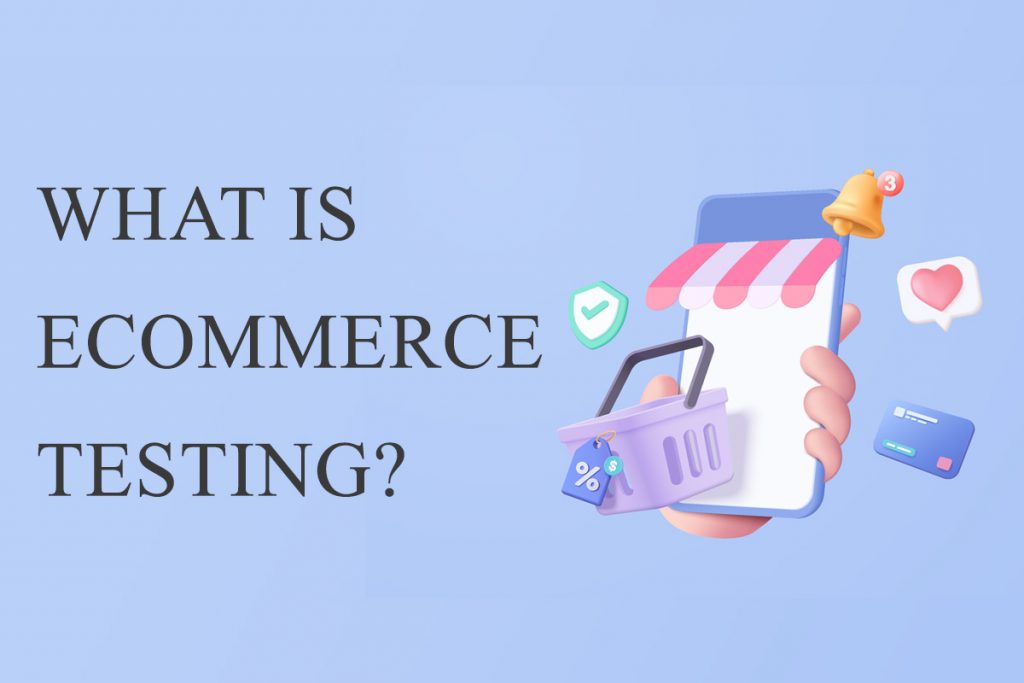As of 2024, the number of digital buyers has recently exceeded 2.71 billion, 70 million more than in previous years, marking a 2.7% year-over-year increase (Oberlo, 2024). An impressive, well-functioning, and up-to-date eCommerce website is essential for business survival through an overly competitive era and a prolonged downward economic crisis.
With fierce competition and dwindling online attention spans, simply having a functional website might not be enough. To truly thrive in this dynamic space, eCommerce businesses need to prioritize the seamless and engaging user experience at the very top. Having all the foundations taken care of and fundamental user experience principles surfing the web in check with the help of eCommerce testing, where effective testing tools become a game changer. They help identify and eliminate friction points, optimize conversion rates, and drive revenue without interruptions.
In today’s blog, we’ll guide you through the basics of initiating an effective eCommerce testing process, equipping you with the fundamental knowledge and insights to explore your online store’s full potential.
What is eCommerce Testing?
eCommerce Testing is a process that detects and rectifies potential issues before the website is launched publicly. Speaking from the customer perspective, the eCommerce testing procedure helps to smooth out any bumpy incidents throughout the customer journey. It guarantees the customer’s experience remains spectacular even after the checkout process. It involves assessing and validating diverse elements within an online store, focusing on reliability, functionality, and security. eCommerce testing can be served as a trial run for your online store before it officially goes live.
Why is eCommerce Testing Essential?
The significance of eCommerce testing cannot be overstated. A smoothly functioning eCommerce website is imperative to retaining customers and generating revenue in today’s fiercely competitive market. A poorly designed and malfunctioning webpage can lead to negative customer experiences, prompting them to abandon their carts and seek alternatives elsewhere. Moreover, security breaches can result in the theft of customer data, tarnishing a business’s reputation and potentially inviting legal repercussions.
By conducting eCommerce testing, businesses can proactively identify and rectify issues before they escalate into major problems. Testing helps uncover bugs, glitches, and security vulnerabilities that can be addressed before the website’s launch, saving businesses valuable time, money, and resources that would otherwise be spent on post-launch fixes.
Types Of eCommerce Websites/Applications
B2C (Business-to-Consumer)
B2C eCommerce, also known as retail eCommerce, is a digital transaction between businesses/marketplaces and individual consumers. It’s the most popular and major eCommerce business model as of today. B2C typically refers to businesses directly selling products or services to the end consumers. For instance, Amazon, eBay, Shopee, etc. – These global giants provide user-friendly platforms where consumers can explore a vast range, conduct secure transactions, and benefit from efficient delivery services.
B2B (Business-to-Business)
B2B eCommerce is the digital exchange of goods or services between businesses. A great example of a B2B service platform that we IT geeks all know of is Atlassian, which offers an extensive work management space. From Software to Products, Business team members to code-cracking developers and customer services agents, Atlassian has them all with their JSW, JWM, and JSM.
C2C (Consumer-to-Consumer)
C2C eCommerce allows customers to trade among themselves through a 3rd party platform. You might have caught the C2C model on eBay and Craigslist, which dominate the market in the US and Europe, while Shopee and Lazada have their market share in Asia. Many of these platforms offer their fair share for both B2C and C2C models to cover business wholesales, retailers, and individual sellers.
C2B (Consumer-to-Business)
C2B eCommerce is the opposite of the B2C model, where customers offer unique products or services to the business to gain competitive advantages against their competitors. Such products and services include consumer blogs, videos, social media posts, reviews, etc., to promote brand wellness or accomplish a specific business goal/task.
D2C (Direct-to-Consumer)
D2C eCommerce embraces the digital transaction between manufacturers and producers to sell their products directly to the end customers without going through any 3rd parties retailers/vendors or intermediaries. The famous Apple had successfully mastered this D2C model art in the last decade by removing all the middlemen involved in the selling process and approaching their customers directly either through their online & offline stores.
Every year, Apple introduces its new releases, and the fastest way to get your hands on these new products is either through pre-order on its website or lining up before its offline store opens on the release date. The D2C model definitely helps Apple retain their customers, building its brand loyalty in the long run.
Common Bugs Found in eCommerce Testing
Bugs and errors can lurk in or stay hidden almost anywhere on an eCommerce website. While customers tend to empathize with minor typo issues and 404 errors or broken links here and there. Google or search engine bots don’t. It would heavily impact your site ranking overall, limiting your potential to reach your target audiences. That’s what you wouldn’t want to miss.
Confronting bugs in conversion processes, such as product ordering, checkout, or payment, is a big no-no. It would immediately turn off your customer’s excitement and leave them frustrated. These types of experiences usually result in customers associating your brand image as lousy, like their recent experience was. Below are a few common bugs that businesses are less likely to pay attention to, although they should be:
Security Risks
Cyberattacks, data breaches, hacking, or fraud seem to be mentioned nonstop these past few years, as we might have heard them over and over on the news and in announcements once in a while. The media might somehow manage to “normalize” them to the point that we take these things too lightly. That’s until we become the victims! It would not be fun then.
Therefore, constantly improve your security measurement by implementing industry-standard safety protocols such as HTTPS, SSL, encryption, and strong password policies to keep your security compliant with data protection regulations. Protecting your customers’ data, just as your privacy and business private information, is something we all should take seriously.
Payment Gateway Integration Issues
Any unexpected issues occur before, during, and right after the payment process, such as failed transactions, timeout sessions, spamming errors, captcha errors, etc. The only ways to bypass these faulty occurrences are to regularly carry out payment testing processes in a sandbox environment, keep the secure connections (HTTPS), and smoothly collaborate with payment gateway providers for updates.
Incorrect Inventory Display
This lies somewhere between the payment session and the eCommerce web surfing experience. Lacking accuracy in inventory system integration on your website platform shows little to no effort in achieving a seamless real-time customer shopping experience. Synchronizing stock updates is nothing new in the eCommerce world; it only requires your attention to detail, regular audits, and testing to get it functioning properly.
Promotional Offers and Discounts Malfunctioning
Offering promotions and discounts that fail to be redeemed in the checkout process is quite lame, to be honest. It might sound out of the blue, but it happens frequently. To your surprise, up to 46% of customers would legitimately abandon their cart if the coupon code doesn’t work or is not available.
Broken Links and Redirects
Piggybacking our previous mentions above, customers sometimes forgive broken links or incorrect redirects, particularly when a product becomes discontinued or unavailable in a certain section. However, if repeated multiple times, they’ll lose their sympathy and patience towards the brand. Routinely scan and repair broken links, establish appropriate URL redirects, perform regular website audits, thorough URL mapping, and set up 301 redirects to prevent broken links from being needed.
Long, complicated, or irrelevant URLs can be confusing and significantly impact click-through rates and conversions. To improve user experience, opt for descriptive keywords, hyphens, and slashes and avoid unnecessary parameters.
Page Load Performance Issues
Obviously, if the eCommerce website takes way too long to load their products, the faster their customers’ interest and shopping adrenaline hype will drop. Considering how many are pushing their boundaries to boost their page load speed much faster than their competitors to gain that bit of competitive advantage. Statistics don’t lie; up to 57% of customers would end their shopping journey if they had to wait more than 3 seconds for a page to load, and 80% would never return.
Therefore, if you can go the extra mile to increase that speed, do it! Start by optimizing images and scripts, using content delivery networks (CDNs), implementing browser caching, and conducting performance testing.
Mobile Responsiveness Bugs
Consistencies in website appearance and functionality across different devices, particularly on mobile platforms, can encourage customers. Resolve such bugs by adopting responsive design principles, carrying out thorough cross-browser testing, and prioritizing a mobile-first approach in development.
Challenges of eCommerce Testing
While the benefits of eCommerce Testing and automation are pronounced, challenges are unavoidable.
- Rapid Technological Shifts: The eCommerce landscape experiences rapid technological evolution, necessitating constant adaptation from testers and developers. For instance, the shift from conventional web applications to single-page applications (SPAs) utilizing frameworks such as Angular or React has markedly changed testing methodologies. Testers must consistently refine their environments and testing tactics to keep pace with these advancements.
- Diverse Devices and Browsers: Keep your eCommerce website uniform to maintain consistent customer experiences across all devices and browsers.
- Customer Profiles: eCommerce platforms serve a diverse clientele, from beginners to seasoned shoppers. Comprehensive testing requires simulators that replicate this diversity. For instance, novice users may navigate the site slowly and utilize basic features, whereas experienced users might leverage advanced search options or shortcuts. Crafting tests that encompass these diverse behaviors presents a significant challenge.
- Scalability Testing: As eCommerce enterprises expand, they must manage rising traffic and transactions. Scalability testing becomes essential to guarantee that the platform can smoothly scale up to manage heavier loads without compromising performance. Unforeseen surges in traffic during promotions or seasonal peaks present an ongoing challenge, requiring proactive testing approaches.
- Realistic Test Data: Generate pertinent test data for personalized products to replicate authentic customer scenarios.
- Security Concerns: Safeguard sensitive customer information by implementing robust security measures.
- Meeting Regulatory Requirements: Keeping up with constantly changing regulatory standards and compliance demands poses an ongoing hurdle in eCommerce testing. Ensuring that the platform complies with data protection laws, payment industry regulations, and other legal requirements is crucial. Remaining informed about legal updates and adjusting testing methods accordingly is vital for eCommerce businesses to evade penalties and uphold a reliable reputation.
- Continuous Testing: Address the challenge of conducting frequent tests while the website is live without causing disruptions.
Enhance your eCommerce testing with these best practices
- Consistent functionality and appearance for all users by testing the platform across various browsers and devices, preferably using real devices instead of simulators.
- Guarantee seamless website performance under heavy traffic loads.
- Prioritize testing scenarios based on user behavior, preferences, and expectations to improve the overall user experience.
- Carrying out payment process testing intensively, including transactions, refunds, and payment gateway integrations, to uphold secure and error-free financial transactions.
- Conduct A/B testing with different views, showcasing similar/relevant products/most popular/best sellers to customers to escalate the conversion rate and gather valuable feedback to implement the optimal options and eliminate inefficiencies.
- Create and execute test cases manually to experience the site as a normal customer might and automate repetitive and complicated tasks for efficiency.
- To enhance user satisfaction and engagement, evaluate website usability through user interface testing, navigation checks, and feedback analysis.
We have gone to this extra blog just to establish our belief and stand our ground in how eCommerce testing already has been, has been, and will continue to be the foundation of any eCommerce business, whether for its websites or apps. If displayed products, shelves, and store decoration/interior had a tremendous impact on customers’ purchase behavior, the websites and apps’ interface, website flows, and payment gateway should be treated the same way.
Be certain that your eCommerce platforms have undergone extensive testing. This is not only to deliver an absolutely enjoyable shopping experience to all your customers but also to set the stage for customer satisfaction and pave the path to your eCommerce platform’s success.
ContactContact
Stay in touch with Us




